The Playboy Comeback: Why Miami Is the New Global Headquarters
Playboy plans to open a new Playboy Club in South Florida and establish a content production studio, aiming to reinvent itself as a modern multimedia powerhouse rooted in luxury, nightlife, and digital culture.-Rafael Benavente
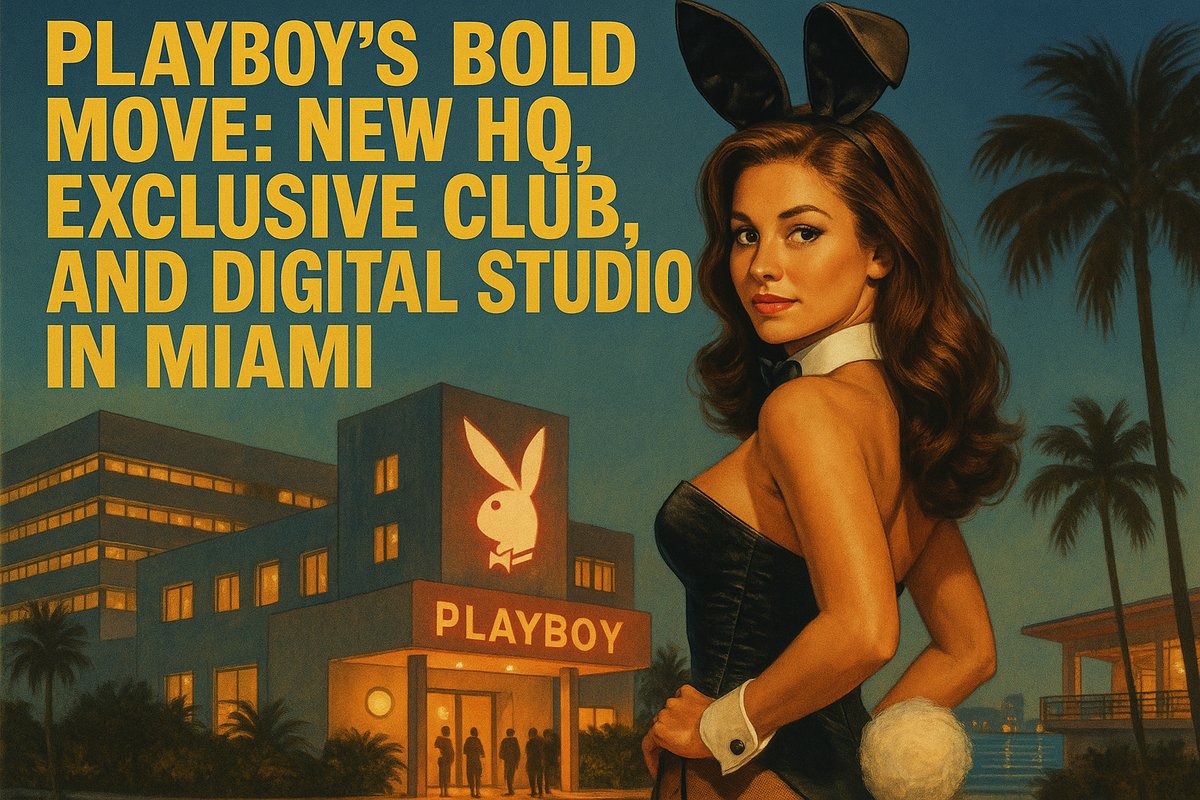
By Rafael Benavente
From Hollywood to Miami: Playboy’s Bold Reinvention in South Florida
Introduction
For decades, Playboy was synonymous with Hollywood glamour, cutting-edge lifestyle, and provocative publishing. Hugh Hefner’s empire thrived on the West Coast, blending entertainment with exclusivity. But times have changed. In 2025, Playboy announced it would move its global headquarters from Los Angeles to South Florida—and with that decision, the brand is staging one of its most ambitious reinventions yet.

The move comes with more than just a new office. Playboy plans to open a new Playboy Club in South Florida and establish a content production studio, aiming to reinvent itself as a modern multimedia powerhouse rooted in luxury, nightlife, and digital culture.
This shift is not just a corporate relocation; it reflects larger dynamics shaping the U.S. economy and culture—California’s struggles, Florida’s rise, and the enduring allure of reinvention.
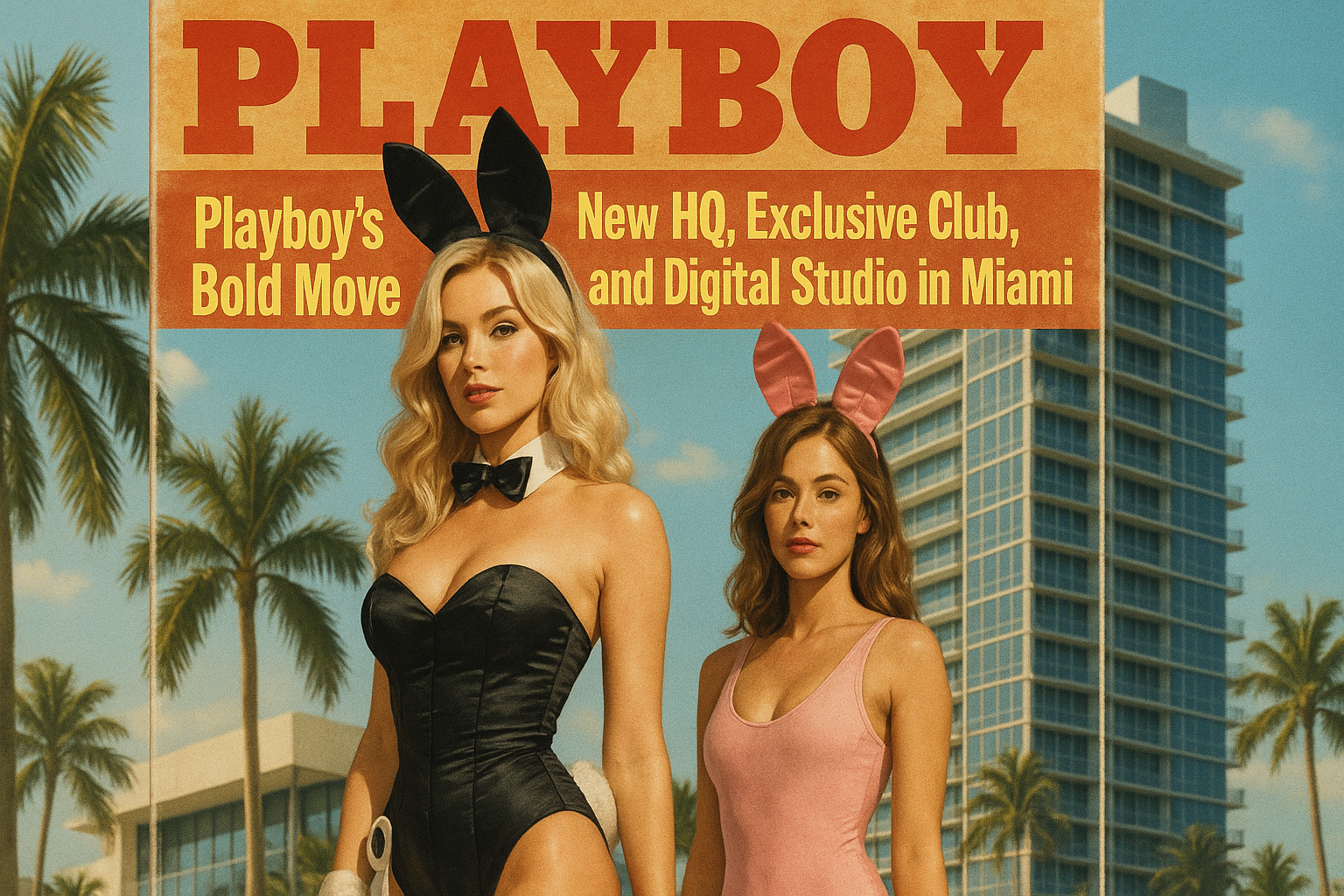
1. Playboy’s Legacy: From Magazine to Global Icon
When Hugh Hefner launched Playboy magazine in 1953, he sparked a cultural revolution. The brand quickly grew beyond publishing:
- Playboy Clubs became global status symbols in the 1960s and 70s.
- The Playboy Mansion became a pop-culture landmark in Los Angeles.
- Playboy’s logo—the rabbit head with a bow tie—remains one of the most recognized symbols worldwide.
Yet as the print industry declined and cultural values shifted, Playboy faced mounting challenges. The magazine ceased regular U.S. print publication in 2020, pivoting instead toward digital content, licensing, and brand partnerships.
The decision to leave Los Angeles underscores the need for a new identity in a new era.
2. Why Leave Los Angeles?
For over 60 years, Los Angeles was Playboy’s natural home. But the modern business environment in California has become less attractive:
- High costs: Real estate, taxes, and labor costs weigh heavily on businesses.
- Regulatory complexity: Many companies cite California’s dense regulations as burdensome.
- Cultural shifts: LA’s entertainment scene is no longer the only hub for global culture. Digital platforms have decentralized influence.
Playboy is not alone. Over the past five years, dozens of high-profile firms—ranging from hedge funds to media startups—have left California for Texas and Florida. Playboy’s decision mirrors this trend of corporate migration toward business-friendly states.
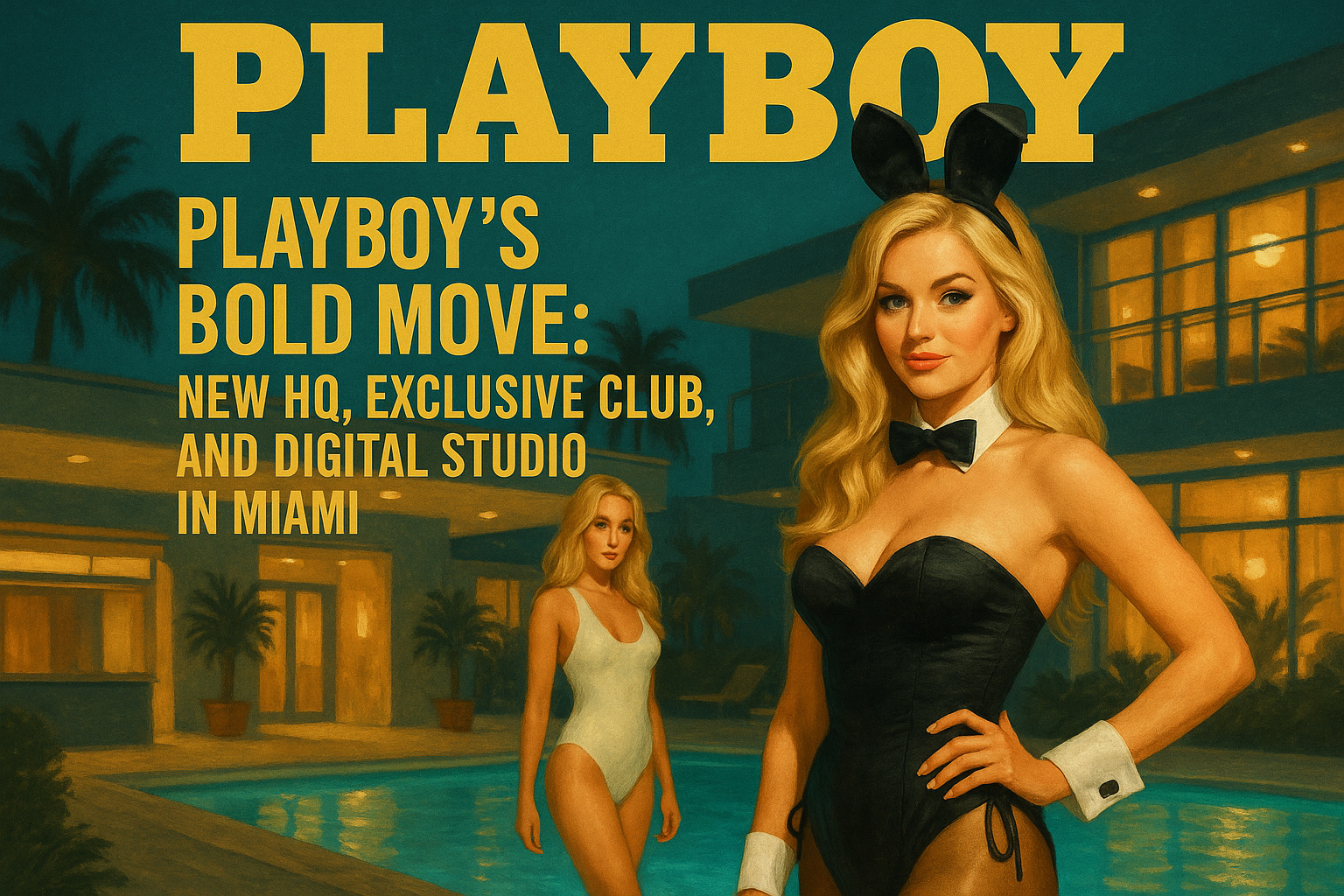
3. Why South Florida?
If Los Angeles represents the fading glamour of 20th-century Hollywood, South Florida represents the energy of the 21st century:
- Tax and business climate: Florida offers no state income tax and a pro-business regulatory environment.
- Cultural capital: Miami has evolved into a global hub for art (Art Basel Miami Beach), fashion, music, and nightlife.
- Financial migration: Hedge funds, family offices, and fintech firms are relocating to Miami, bringing wealth and opportunity.
- Tourism magnet: With millions of international visitors annually, South Florida offers a constant flow of luxury consumers.
For Playboy, South Florida offers the perfect stage for reinvention—a place where glamour, culture, and wealth intersect.
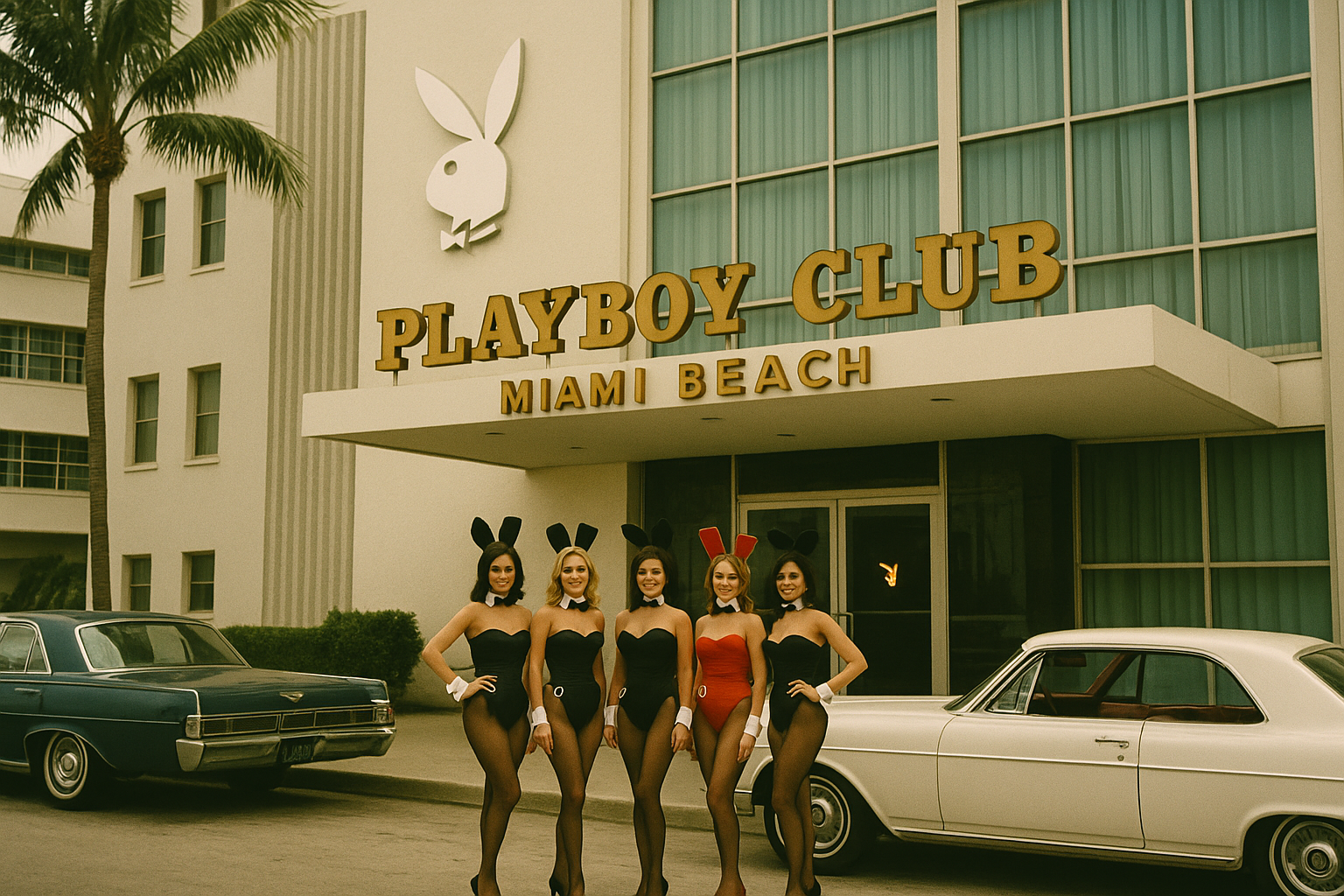
4. The Return of the Playboy Club
The announcement includes the launch of a new Playboy Club in South Florida. Once legendary for their exclusivity and sophistication, the original clubs helped define the brand’s golden era.
The Old Playboy Clubs (1960s–1980s)
- Operated in cities like Chicago, London, and New York.
- Featured the iconic Playboy Bunnies as hostesses.
- Became cultural hotspots for celebrities, politicians, and elite professionals.
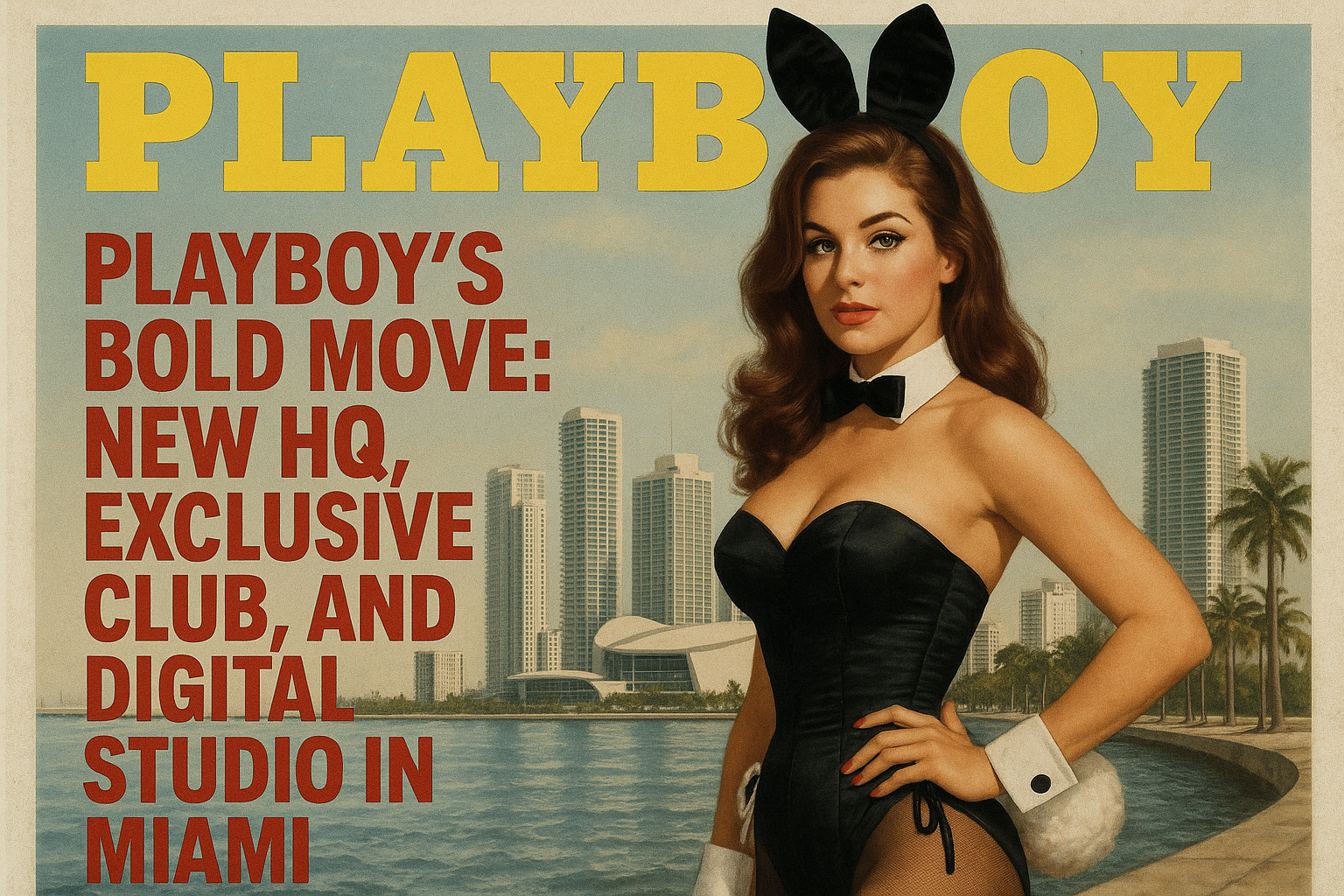
The New South Florida Club
- Envisioned as a members-only venue combining high-end dining, entertainment, and nightlife.
- Likely to appeal to Miami’s international elite, from financiers to celebrities.
- Represents an attempt to merge heritage branding with modern luxury experiences.
If executed well, the club could re-establish Playboy as a tastemaker in nightlife.

5. Content Studio: A Digital-First Playboy
Print once made Playboy a cultural authority, but the digital era demands a new approach. The South Florida move includes plans for a multimedia content studio, which signals a pivot to:
- Digital video & social media: Short-form lifestyle and entertainment content.
- Partnerships with influencers: Leveraging global creators to expand reach.
- Fashion and music integration: Reclaiming cultural cachet beyond adult entertainment.
- Global membership strategy: Content tied to experiences at Playboy Clubs worldwide.
By anchoring content production in Miami, Playboy taps into a city already central to Latin American and international creative industries.
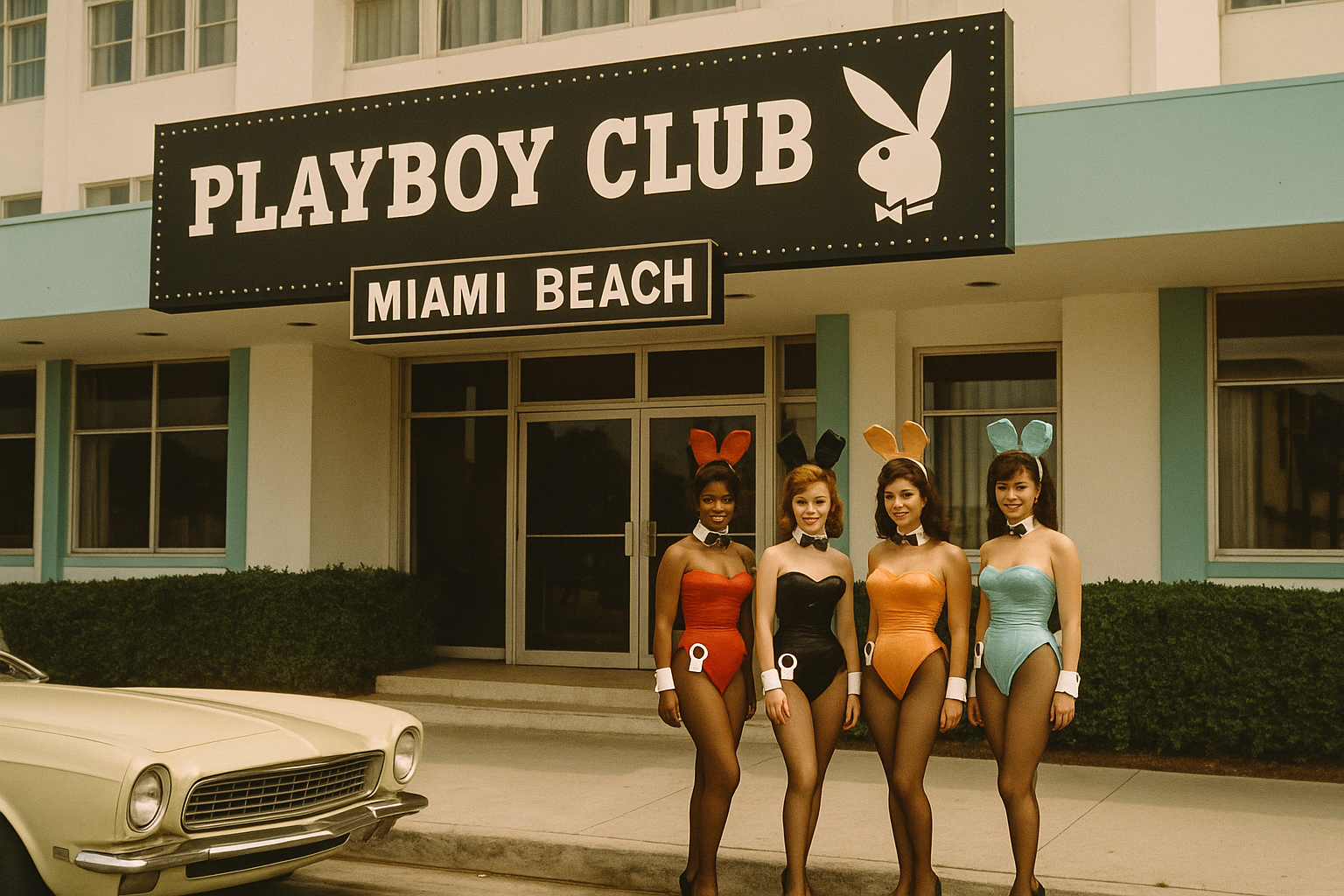
6. Reinvention or Risk?
Playboy’s move is ambitious, but also fraught with challenges:
Strengths
- A globally recognized brand with cultural equity.
- A strong lifestyle and luxury narrative suited for Miami.
- New leadership committed to digital transformation.
Weaknesses
- Legacy baggage: Past controversies may limit brand flexibility.
- Intense competition: Countless luxury lifestyle brands and influencers dominate the space.
- Execution risk: The new club must balance nostalgia with innovation.
The key lies in how Playboy reinvents its “exclusivity” in a democratized digital world.

7. South Florida’s Corporate Migration Boom
Playboy’s move is part of a larger story of corporate relocation to South Florida. In the last five years:
- Goldman Sachs, Citadel, and Blackstone have expanded or moved offices to Miami.
- Tech startups are calling Miami the “Wall Street South” and “Silicon Beach”.
- Entertainment companies are increasingly choosing Miami as a production hub.
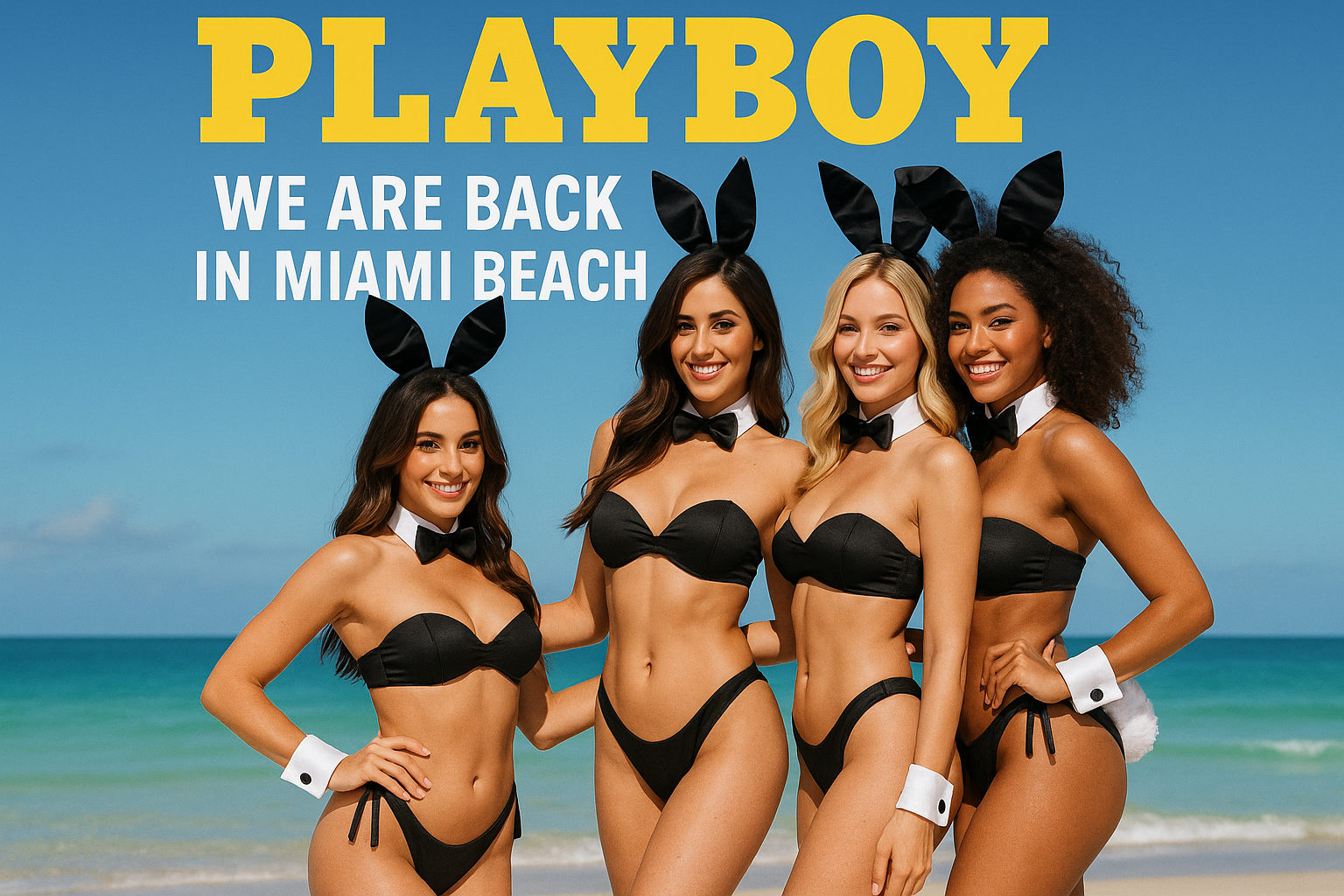
Why Miami Works for Lifestyle Brands
- Proximity to Latin America and Europe gives it global reach.
- Year-round tourism sustains luxury businesses.
- The art-meets-finance ecosystem appeals to brands like Playboy seeking reinvention.
Playboy is not just moving; it’s embedding itself into Miami’s emerging identity as a global luxury capital.
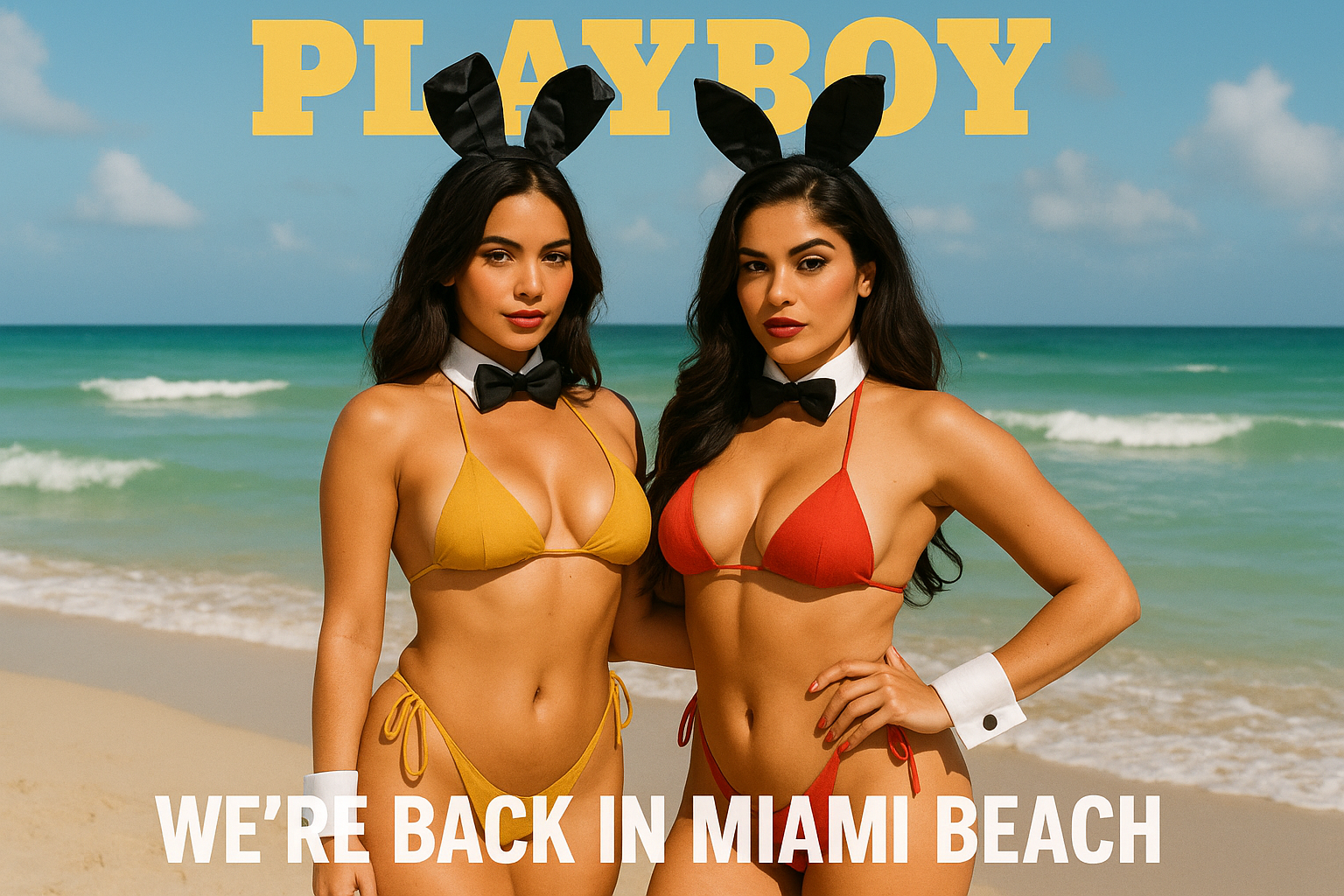
8. Cultural and Economic Impact
Playboy’s arrival could have ripple effects in South Florida:
- Job creation in hospitality, content production, and marketing.
- Tourism boost as fans and members travel to experience the new Playboy Club.
- Global branding that strengthens Miami’s image as a cultural innovator.
However, success depends on execution. If the new club feels outdated or gimmicky, it could damage rather than elevate the brand.
9. Playboy’s Future: Can the Rabbit Run Again?
The Playboy rabbit has always symbolized sophistication with a wink of mischief. Now, the challenge is making that symbol relevant to a new generation of consumers.
- Gen Z and Millennials value authenticity, inclusivity, and digital presence.
- Playboy must modernize without alienating older audiences who remember its golden years.
- Miami gives the brand a chance to reconnect glamour with cultural innovation.
If successful, Playboy’s South Florida move could become a blueprint for how legacy brands reinvent themselves in the digital age.
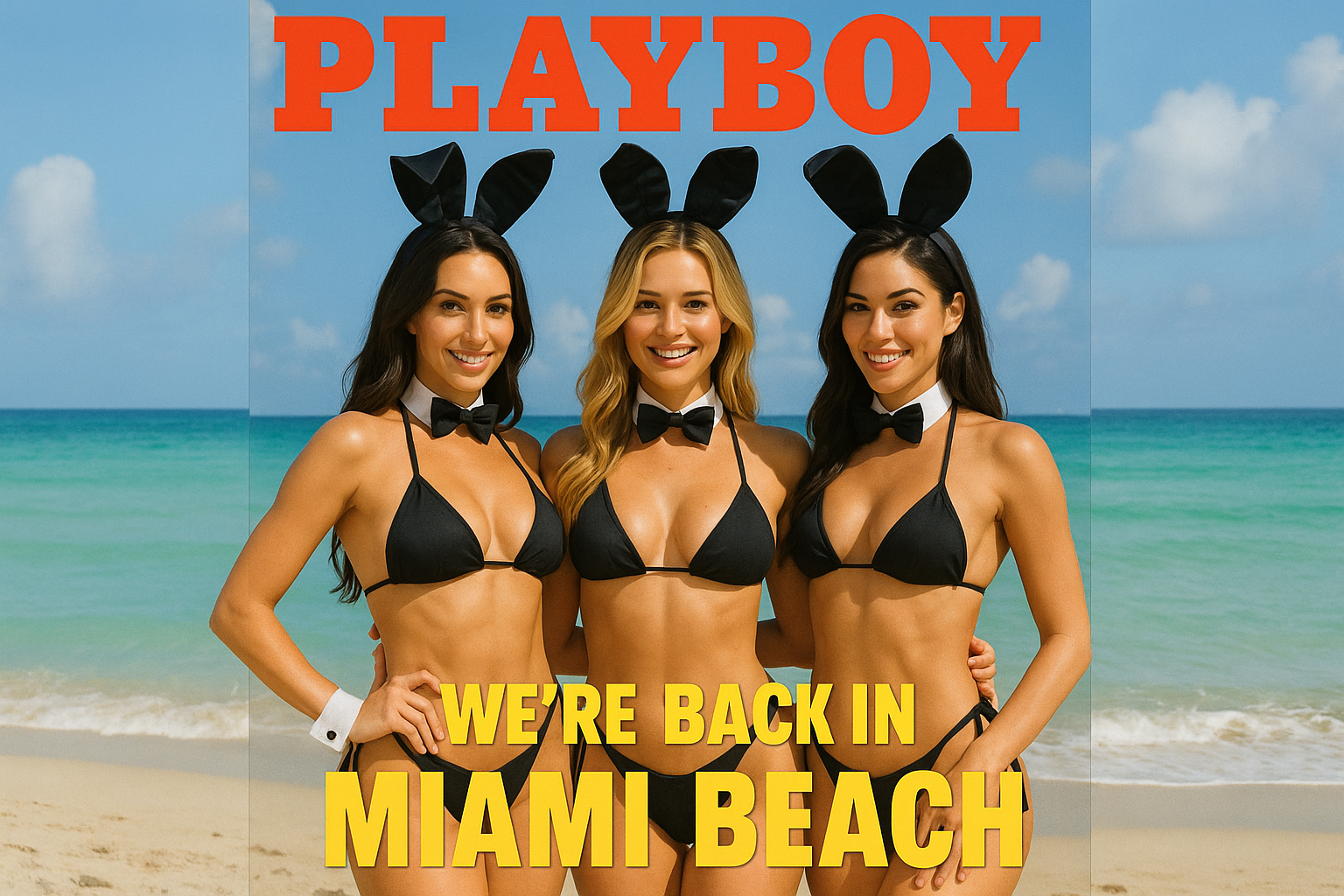
Conclusion
Playboy’s relocation from Los Angeles to South Florida is more than a change of address—it’s a strategic gamble on reinvention. By pairing a members-only club with a cutting-edge content studio, the brand is betting that Miami’s unique blend of finance, culture, and nightlife can spark a new golden age.
The move captures a broader trend: as California’s dominance wanes, Florida is emerging as a magnet for businesses seeking tax advantages, cultural relevance, and global exposure.
Playboy has always thrived on pushing boundaries. Now, with Miami as its new home, the brand is once again betting on the future. Whether it reclaims its iconic status or fades into nostalgia depends on execution—but one thing is clear: the rabbit is on the run again.
By Rafael Benavente
